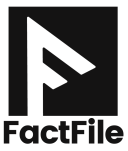The Sindh Cabinet has approved a CNIC-based vehicle registration system, aligning the province with the Islamabad model. This decision came during a meeting held at the Chief Minister’s House. Chief Minister Syed Murad Ali Shah chaired the session, attended by ministers, advisors, assistants, the chief secretary, and departmental secretaries.
System Linked to CNIC, Not Chassis
The new system will link vehicle registration to the owner’s CNIC instead of the chassis number. This change allows individuals to retain their personalized number plates even after selling their vehicle. If owners don’t wish to keep the number plate, it will return to the Excise Department for auction or reissuance.
The Vehicle Identification Number (VIN) will still rely on the chassis number. However, the registration number will now follow the owner, not the car.
Cabinet Approves Reform in Principle
The Cabinet gave in-principle approval to the new registration model. The Excise Department will now draft legal amendments to support the transition. This shift is designed to bring Sindh in line with global best practices and Islamabad’s recent reforms.
Benefits for Vehicle Owners
This system offers multiple advantages:
- Convenience: Vehicle owners won’t need to change plates when replacing cars.
- Clarity: CNIC linkage makes ownership records more accurate.
- Security: The system makes it easier to track and verify vehicle ownership.
Establishment of Vehicle Fitness Inspection Centers
In addition to registration reforms, the Cabinet approved the creation of Vehicle Fitness Inspection Centers. These facilities will check roadworthiness and emissions, improving safety standards across the province. Officials say this will help identify unfit vehicles and reduce traffic hazards.
Procedure for Seized Government Vehicles
The Cabinet also endorsed Standard Operating Procedures (SOPs) for government vehicles with tampered or altered chassis. These include vehicles that were seized or modified through cut-and-weld techniques. The SOPs will guide the legal registration of such vehicles.
A Step Toward Digital Governance
The Sindh government is taking clear steps toward modernizing vehicle administration. This reform aligns with national digitization goals and reflects practices already tested in Islamabad.
The Excise Department believes that linking registration to CNICs will:
- Simplify processes for buyers and sellers.
- Improve record-keeping and reduce fraud.
- Assist law enforcement in vehicle tracking.
Public Awareness and Rollout Plan
Officials plan to launch an awareness campaign before rolling out the new system. The Excise Department will start with pilot programs in Karachi. After testing and feedback, they’ll expand the program across the province.
Legal teams will also prepare and finalize the necessary amendments. These changes will provide the legal framework needed to implement the CNIC-based model.
Revenue from Personalized Plates
Unused or surrendered plates won’t go to waste. The Excise Department plans to auction premium number plates, generating revenue for the government. This approach follows global trends and adds an incentive for the public to use Personalized Registration Marks (PRMs).
READ MORE: Bahria Town Could Be Shut Down, Warns Malik Riaz
Statements from Officials
A senior official from the Excise Department said, “This reform will reduce confusion during ownership transfers and prevent misuse of registration plates. It also aligns us with Islamabad’s successful CNIC-based system.”
Chief Minister Murad Ali Shah called for quick action. He urged officials to ensure a citizen-friendly implementation and to minimize red tape during the transition.

























